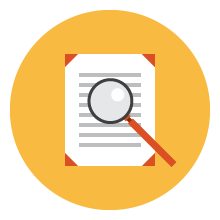Learning Object Details
4. Writing Learning Outcomes - Cognitive Domain
Overview
Log in to save/purchase this learning object Log in / Register
- Price
- Free
- Difficulty
- Beginner
- Themes
- Teaching and Learning (Education & Learning Theory (Principles & Theory))
- Teaching and Learning (Clinical Teaching (How People Learn))
- Teaching and Learning (Collaborative Learning)
- Teaching and Learning (Self-Regulated / Motivation)
- Teaching and Learning (Large Group Learning)
- Teaching and Learning (Small Group Learning)
- Teaching and Learning (Simulation)
- Teaching and Learning (Clinical Teaching)
- Teaching and Learning (E-Learning)
- Teaching and Learning (General principles and best practices)
- Curriculum Development (General Principles and Best Practices)
- Instruction
Content
In 1956, Benjamin Bloom and his colleagues developed classifications of intellectual behavior and learning in order to identify and measure progressively sophisticated learning. In 2000-2001, Anderson and Krathwohl redefined work of Bloom and postulated an adaptable Bloom’s Taxonomy.
Diagram retrieved from https://www.psia-nw.org/newsletter-articles/blooms-taxonomy-levels-of-understanding/
Here is the description of the Bloom’s Taxonomy by Anderson and Krathwohl (2001). Using the following description will guide you in writing the observation behaviour for cognitive domain according to the level that you wish the learners to achieve.
Level | Definition | Verbs |
Remember | Retrieving relevant knowledge from long-term memory | 1.1 Recognize 1.2 Recall |
Understand | Determining the meaning of instructional messages, including oral, written, and graphic communication. | 2.1 Interpret 2.2 Exemplify 2.3 Classify 2.4 Summarize 2.5 Infer 2.6 Compare 2.7 Explain |
Apply | Carrying out or using a procedure in a given situation. | 3.1 Execute 3.2 Implement |
Analyze | Breaking material into its constituent parts and detecting how the parts relate to one another and to an overall structure or purpose. | 4.1 Differentiate 4.2 Organize 4.3 Attribute |
Evaluate | Making judgments based on criteria and standards. | 5.1 Check 5.2 Critique |
Create | Putting elements together to form a novel, coherent whole or make an original product. | 6.1 Generate 6.2 Plan 6.3 Produce |
Bloom, B. S.; Engelhart, M. D.; Furst, E. J.; Hill, W. H.; Krathwohl, D. R. (1956). Taxonomy of educational objectives: The classification of educational goals. Handbook I: Cognitive domain. New York: David McKay Company.
Anderson, L. W. & Krathwohl, D.R., et al (2001) A taxonomy for learning, teaching and assessing: A revision of Bloom’s taxonomy of educational objectives. New York: Longman
Activity
Warning
This learning object had already been added in your cart, click "Go to cart" to view your cart.
Go to cart

